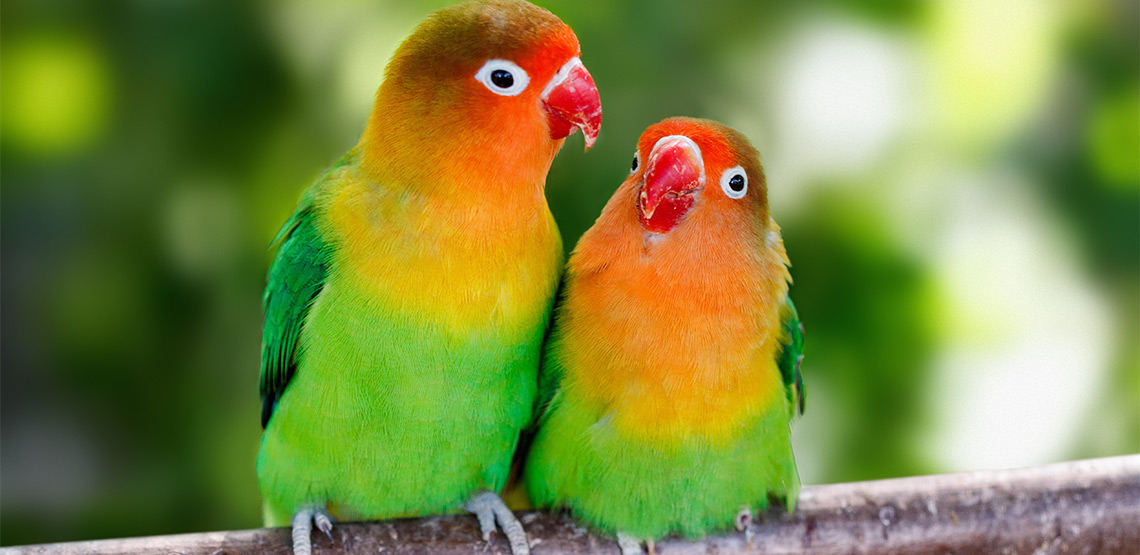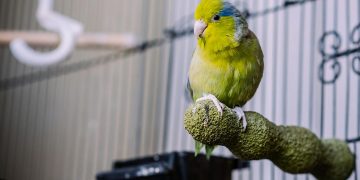A Guide to the Lovebird
The lovebird is a small, social parrot named for its strong lifelong monogamous mating habits. A lovebird couple will often spend hours sitting beside one another, but birds kept in pairs tend not to be too much in love with each other to interact with their human companions as much as single lovebirds do.
Origins and Natural Habitat
Lovebirds are native to Africa and Madagascar, and for this reason, they're sometimes collectively referred to as "African lovebirds." Since their domestication, many different color variations have been produced by breeding lovebirds selectively. Red-faced, black-collared, Abyssinian, black-cheeked, masked and peachface lovebirds are among the more common species variants.
Appearance and Characteristics
Size: African lovebirds average about 6 to 8 inches in length a little over half an ounce in weight.
Plumage: Wild lovebirds are predominantly green, with a smattering of vibrant hues flecking their upper bodies. As with most relatives of the parrot, breeders have created an enormous range of other colors and color combinations, but green is almost always dominant, or at least present, in the primary plumage.
Song/Chirp: These birds sing almost incessantly. In fact, it's best to keep them caged away from your bedroom to ensure their early-morning chirping doesn't wake you up. Their songs are higher-pitched, cheerful and pleasant.
You May Also Like:
Related Search Topics (Ads):
Behavior
Lovebirds, particularly peachface lovebirds, are well-known for escaping their cages at every available opportunity. They are also not to be trusted around wooden paneling and will tear paper apart, so keep them away from books. Bird toys, particularly puzzles, can help them stay occupied and keep their destructive tendencies in check.
As their name suggests, these birds live to mate. They make excellent parents, and breeding lovebirds will lay four to six eggs every other day. Eggs hatch after 23 days.
Health and Care
Feeding: A standard mix of 14 seed varieties, supplemented with pellets, fruits and vegetables, is recommended as part of proper lovebird care.
Grooming: Lovebirds are very clean. You won't need to do any more than provide them with a clean birdbath and keep an eye on the length of their beaks and nails. Professional beak and nail trimming is strongly recommended if either grows too long.
Health Concerns: Because they love to chew things, these birds can easily injure their beaks and mouths and may accidentally ingest toxic substances. Be careful to keep chocolate, coffee, rhubarb and avocado out of their reach, and hide any exposed electrical wires to ensure they don't peck at them if they should escape their cage.
Life Expectancy: Lovebirds live about 10 to 12 years.
Finding Lovebirds for Sale
Most pet stores specializing in birds will offer a range of different lovebirds for sale. Prices vary from breed to breed, with peachfaced lovebirds fetching about $40 and rarer variants commanding $100 or more. Expect to spend about $50 to $100 on a good bird cage and about $15 to $25 a month for feed, bird perches and toys.

